In this paper, we’re sharing some of the most common and avoidable issues we’ve seen – not to embarrass anyone or make you feel bad, but to help you and your organization identify where you need to improve so you can grow and thrive.
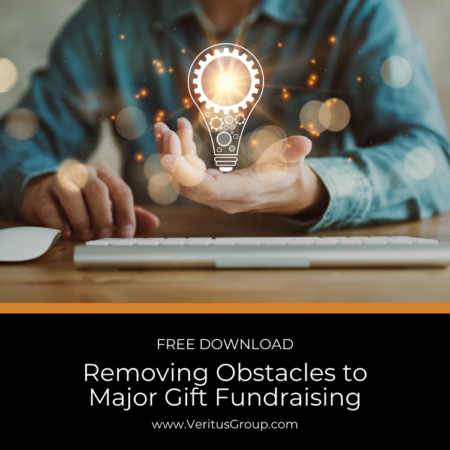

In this paper, we’re sharing some of the most common and avoidable issues we’ve seen – not to embarrass anyone or make you feel bad, but to help you and your organization identify where you need to improve so you can grow and thrive.

In this paper, we’re sharing how you can create a succinct job description that focuses on this core work so you can avoid having your MLO get sucked into every interesting project and event, or torn apart by competing power centers.
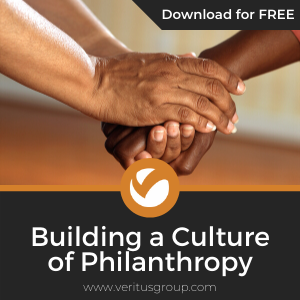
At Veritus, we believe that if we are to create a true culture of philanthropy in our organizations, donors have to be part of our mission – not a way to get our mission accomplished, but PART of the mission. This is a radical idea, but a necessary one.
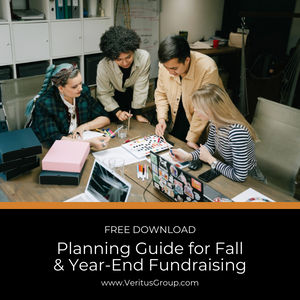
This guide will share key strategies for specific time periods in the fall fundraising cycle, offer creative ideas that our clients have found to be successful, and give you space to brainstorm how you can be strategic and impactful during this time of year.

To help you stay on track with your primary responsibilities as an MGO, we’ve created a printable checklist of what to do and when.
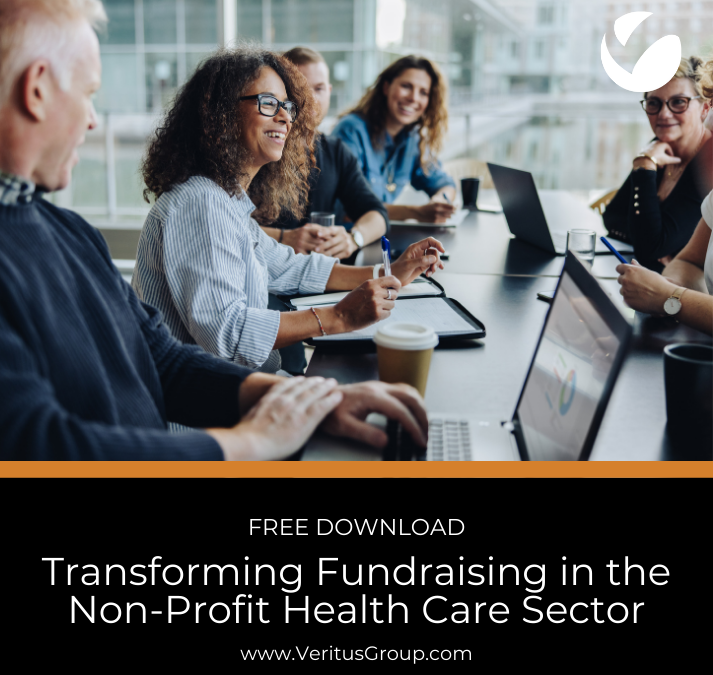
When the pandemic began, many organizations, like the American Cancer Society (ACS), were caught in a situation where fundraising strategies that had “worked well” in the past were suddenly not an option. Thankfully, ACS had internal champions who knew they needed to shift their fundraising out of a transactional giving mindset and create more balanced revenue streams. During our partnership over the course of three years, ACS nearly tripled their revenue. Here’s how they did it.
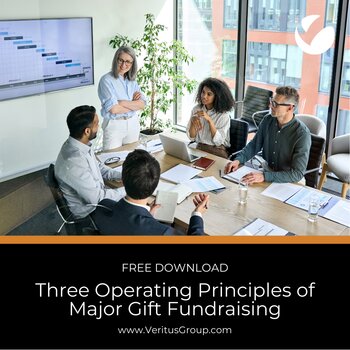
This white paper outlines the operating principles that must be core to your culture and strategy if you’re going to create meaningful and authentic relationships with your donors.
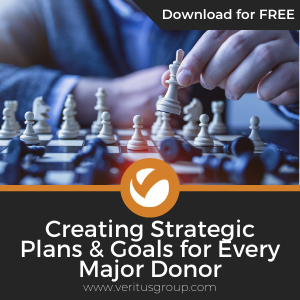
In this paper, we’re going to share with you a step-by-step process on how to put together a strategic plan for each donor. This is the same process we use with our clients to help them overcome what they think is insurmountable. Once MGOs start working on this process, they realize that not only is it possible, but it’s necessary for them to stay on task and become successful.
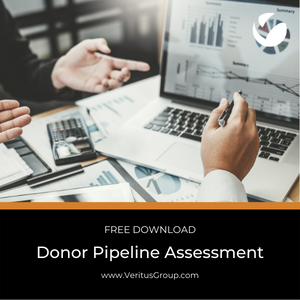
Do you know how healthy your donor file is? Many non-profits are blind to issues of value attrition, pipeline clogs, and revenue diversification that are impacting fundraising efforts. If these are left unaddressed, your organization will continue to see donors leave, and you’ll be left at risk should a crisis occur.
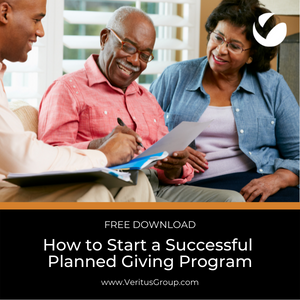
In this paper, we’ll provide a thorough overview of the strategies and process that will help you be successful in building a planned giving program that supports more meaningful donor relationships.

Learn how to hire the right Planned Giving Officer for your legacy program.

In this resource, learn How to Organize the Division of Labor Between Fundraising and Admin Support.
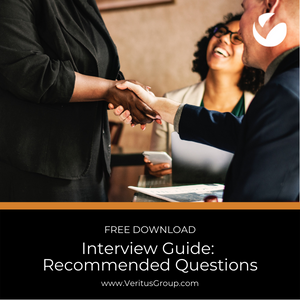
Asking the right questions can have a significant impact on finding the best person for the job.
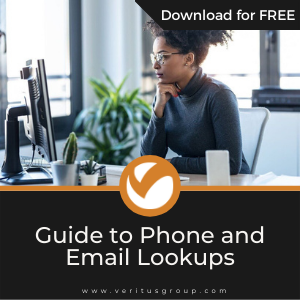
In this resource, we’ll help you find phone numbers and emails for your donors so you can reach out in meaningful ways.

In this paper, we’ll share the qualities and skills we’ve found to be absolutely critical to your success as a Mid-Level Officer.
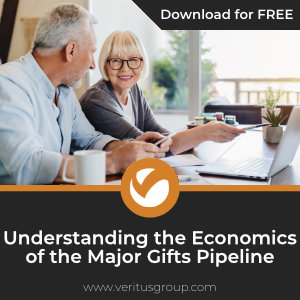
In this paper, we’ll share how to think about each stage of your donor pipeline and why that is so critical to the overall financial health of your organization.
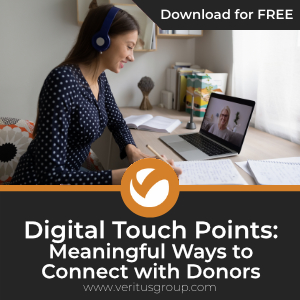
In this paper, we walk you through how to easily and simply begin to use digital tools and touch points to meaningfully connect with your donor.

If you’re thinking about starting or revamping your planned giving program, don’t commit any of these Seven Sins, and you too will be on solid ground well into the future.

Truth be told, not every donor belongs on your caseload. Qualifying donors is very, very important – no, critical to your success as a MGO. Ignore it at your peril. Embrace it, and you will have success. There is nothing like talking to a donor who actually wants to talk to you!

This template is one of the basic tools of The Veritus Way and is used by MGOs all over the world. Most people use it as a supplement to their moves management software or tools.
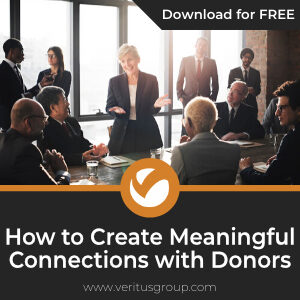
Stop getting hung up on “face-to-face” meetings, when the goal is to deepen your relationships with donors. Learn how to convince your donor to spend meaningful time with you – in any setting.

What is blocking that pipeline to building and expanding those major gift caseloads? Read this paper to discover the right way to unclog that pipeline.
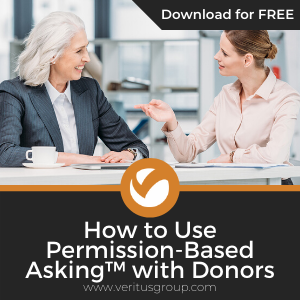
In this White Paper, we help you understand how to explore your donor’s interests and align yourself to them, then move the conversation forward toward a next step that feels right to everyone involved.

This White Paper helps you learn the importance of discovering these motivations, gives you ideas how to find out more, and enables you to apply this knowledge to your practice of fundraising.
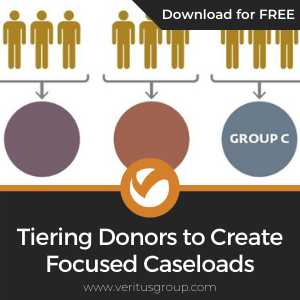
This White Paper will show you how and why a major gift fundraiser can allocate the right amount of time to the donors with the greatest potential – and inclination – to give. This paper is essential for any professional major gift fundraiser.

Too often, MGOs are forced to approach donors without specifics on the costs of programs the donors might support. Richard and Jeff believe that when non-profit staff work together, they can create a menu of items at different price points and on different parts of your mission – and each of these items on the menu can look attractive to different donors who may want to fund them.
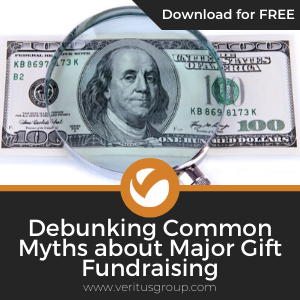
At Veritus Group, we’ve been collecting major gift fundraising myths that some people actually believe are true. Some of them seem reasonable. Some of them are real doozies. But all of them are false. We expose the myths and explain why they are not true in this all new White Paper.
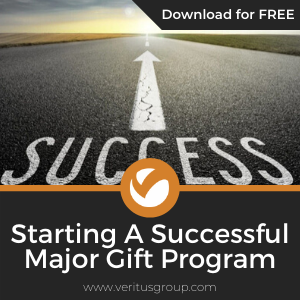
The greatest source of revenue growth for non-profits in the next decade is going to come through improved management and the execution of major gift strategies. So we want to help you in any way we can to ensure your success.
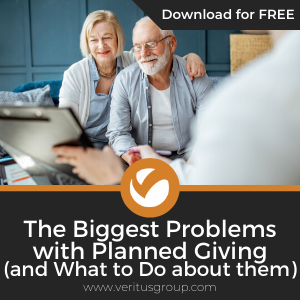
Donations through planned gifts are the deepest expression of donor commitment to your organization. In the midst of a great transfer of intergenerational wealth, most charities are unaware of the existing planned gift donors residing in their database. Learn how to identify and overcome common problems and misconceptions that keep you from the revenue your donors want to give.
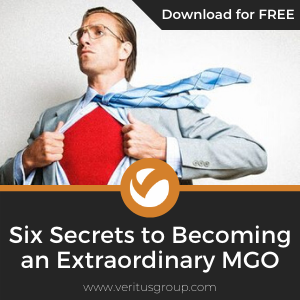
Over the years, we at Veritus have had the privilege of working with a handful of extraordinary MGOs. In our work with these MGOs we’ve uncovered six secrets to what makes them so unique. These “secrets” are unconventional and sometimes counter-intuitive, yet they are key if YOU want to be extraordinary at this work.
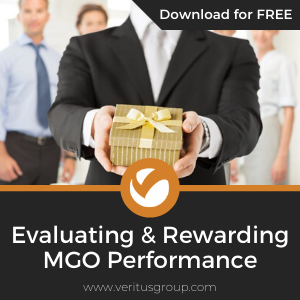
Good management is at the heart of good performance. When major gift officers have plans and goals that are worked out in advance with managers, and when communication is strong, the resulting team can produce powerful results. This paper helps you establish reasonable goals and rewards.

Presenting a proposal to a donor to fund is a crucial step in major gift fundraising. But creating a great document is only one step in the process. By knowing what your donor is passionate about, and matching them well with your organization’s programs, you get 80% of the way there before you start typing.
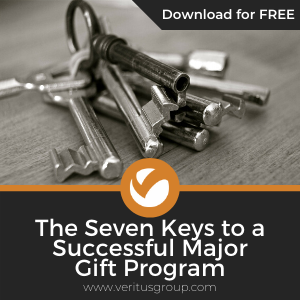
This paper will teach you seven areas to get right in a non-profit, that we at Veritus believe are required for any major gift program to be successful in raising significant dollars for program, retaining donors and providing meaningful and fulfilling work for major gift officers.

The 2020 crises have forced non-profits to change. Some changes should be permanent, not a temporary “pivot.”
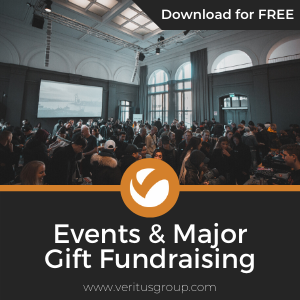
Events can be brilliant for raising the profile of your non-profit, exposing new people to your cause, and making connections. But how good are they at actually raising net revenue?
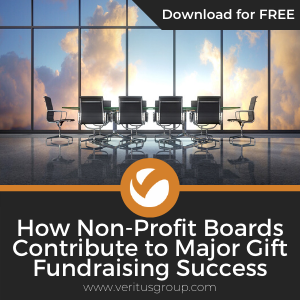
Your board of directors should be an active partner in your fundraising work. They are philanthropy leaders. But how do you activate them, and help them become effective?
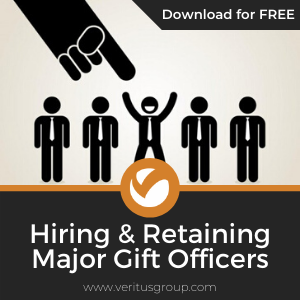
Non-profit leaders need to find major gift officers with the right skills and experience, but you also need someone with passion, someone that fits your organization, someone that will work independently but responds well to management direction. And once you find and train this great MGO, you need to keep them from running to greener pastures in a couple of years. This paper shows you how.
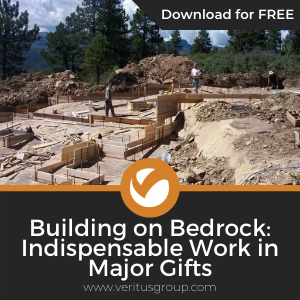
There is a direct correlation between the lack of success in major gifts and the constant, unbalanced need for “new creative ideas” on the part of the major players. This paper will help you identify and focus on the basics that will help you continue to move forward.

If you’re new to major gift fundraising and you’re still trying to find your way, decide right now if you’re willing do to the hard work. The road ahead is not easy, but we promise you, if you’re willing to do the hard work, it will be the most rewarding thing you’ve ever done.
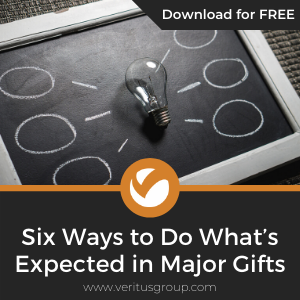
Whether you have a well-run organization or not, much of your success as an MGO is within your control. You may need to be more proactive at times, but you can succeed in most circumstances. What can you do to meet expectations held by others, and how can you keep moving forward?
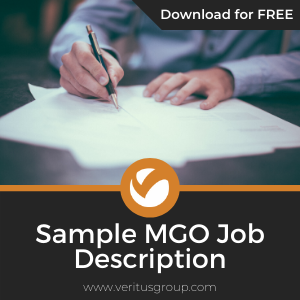
By creating a succinct job description that focuses on this core work, you can avoid having your MGO get sucked into every interesting project and event, or torn apart by competing power centers.

With their deep resources and long time horizons, universities have natural advantages in the search for major donors.